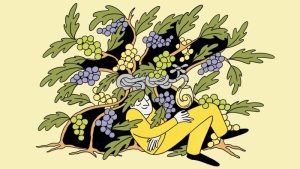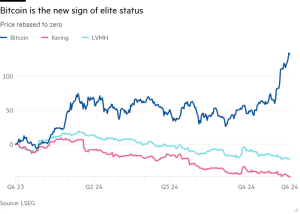‘I have a young gallery, but one that was started when I was 55’
Unlock the Editor’s Digest for free
Roula Khalaf, Editor of the FT, selects her favourite stories in this weekly newsletter.
Karla Osorio’s art gallery is not normal for Brazil. First, it is in the capital Brasília, which despite Oscar Niemeyer’s renowned architecture, has only a modest arts scene. Secondly, the gallery is spread out over five pavilions, white Modernist blocks that reflect the influence of the architect, in a lush garden of 6,000 sq m into which Osorio’s recent exhibition of Hugo França’s monumental wooden sculptures spilled.
Lastly, and perhaps most importantly, the lawyer and collector turned dealer championed Black artists long before many of her better-known peers in Brazil understood the importance of diversity. “Brazil is 60 per cent Black,” she says simply, stating as an obvious fact something which eluded generations of art dealers. “I think collectors are now more receptive to young Black artists — it’s an international tendency that Brazil is part of. It’s important, history has to change and we need to give these artists the value they deserve.”
Osorio grew up in Brasília and like her father, the first lawyer in the newly built capital and former president of the bar association, she followed a legal career, working for 25 years at the Brazilian Treasury. Yet like her father, she maintained a passion for the arts. “My father was a collector, but modern art, classical art. And he was also a poet. I have collected art since I was 15 and so it’s been 40 years since I have been involved with art.” Osorio was interested in neoconcretism and Brazil’s major artists, but through those such as the conceptualist Almandrade, who she still represents, her interests have become more political.
In 2000, she created ECCO — Contemporary Cultural Space, which for more than a decade was the main private non-profit art institution in Brasília, showing the likes of Cildo Meireles, Hélio Oiticica and Nelson Leirner. It was a way of going beyond just collecting, or patronage of other institutions (though she still donates to the likes of the Pompidou), and engaging with artists directly. “Seven years ago I decided to retire. And that’s when I opened the commercial gallery. So I tell everybody, listen, I am a young gallery, but one that was started when I was 55.”
Osorio’s first show, in 2016, was with Francisco Galeno, a painter and public artist known for his geometric abstraction, but whose work owes as much to the crafts culture inherited from his family — his father was a canoe-maker, his mother a seamstress and his grandfather a cowboy who made leather goods — as it does western art history. Her most recent exhibition was Siwaju’s steel sculptures, which subvert their monumental associations to talk of roots and origins and a personal history relating to racism and the land.
In October the gallery will show at the 1-54 fair for contemporary African art in London for the first time. Appearing at the fair was a long-held dream of Matheus Marques Abu, one of the youngest artists in Osorio’s stable, reflecting his research into the links between the African continent and Brazil. “Since he first came to the gallery, he said, ‘When I’m a good artist, my dream would be to go to 1-54.’ So being in the fair three and half years later is a good achievement for him.”

Twenty-eight-year-old Abu grew up in straitened circumstances on the periphery of Rio de Janeiro, so he and Osorio represent the extremes of Brazilian society. But when the gallerist first saw his work at an art fair, where he was selling his own paintings for less than $100, they clicked. She invited him to take part in the gallery’s residency programme (one of the pavilions is given over to a studio and accommodation for visiting artists). “He has worked since he was 15, so he’s a very powerful, intellectually well-honed artist,” Osorio says. “We just gave him money for materials.”
“When he was a kid he was always hanging out at the beach, like so many of his friends, jumping in the water, diving, swimming, and after a while he decided he wanted to know more about that sea that he loved so much, and also think more about his origins so studied history, he studied philosophy, all on his own. And gradually he turned to art.”
In the wake of successful careers such as those of Maxwell Alexandre and Panmela Castro, both of whom Abu assisted, Brazilian artists from the urban periphery have had welcome attention from commercial galleries. Yet this has largely played out in figurative work, often documenting favela life, to the point of saturation. Abu’s work is a great deal stranger and stronger — his latest paintings show Black men carried aloft by seabirds or flying in tandem with them. He produced a series painted on the panes of reclaimed window frames.
“When he talks about the sea, it is about the sea both as a barrier but also a crossing between Africa and Brazil,” Osorio says. “If you are Black and poor in Brazil, how do you make that crossing? He started making these connections between birds and the men in his painting. He’s always talking about coming and going, about freedom, about who has access or who doesn’t, so it makes a lot of sense in his production to use doors and windows.”
We end our conversation because a group from a local school is filing into the gallery and Osorio has promised to show them around. “Not many galleries lose two hours of the day hosting children, but we think it’s important. Anyway, maybe they will be clients in the future.”
October 11-13, 1-54.com
#young #gallery #started




